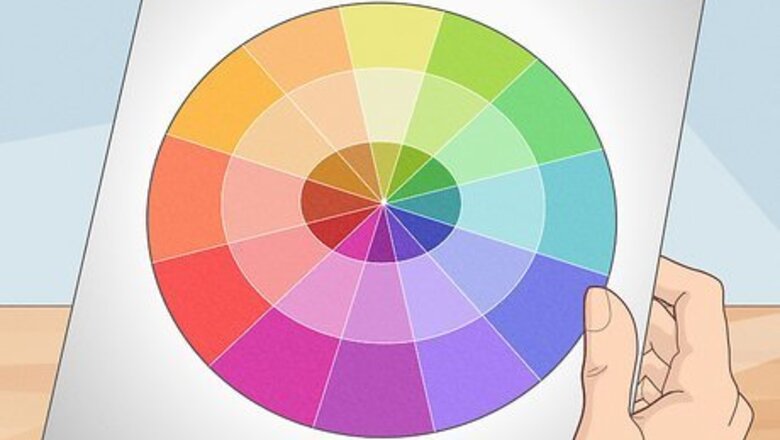
views
Developing an Eye for Color
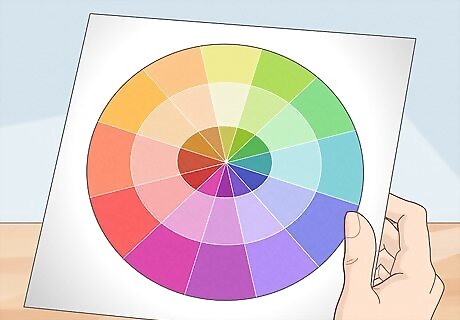
Learn about the color wheel. The color wheel is diagram of colors that provides a useful illustration of what colors match and what colors don't work well together. The first color wheel was developed by Sir Isaac Newton in 1666, and variations on his design have been used as the basis of traditional color theory since then. The color wheel is divided into the following parts: Primary colors: red, blue and yellow. These are the colors that cannot be mixed using any other colors. Secondary colors: Green, orange and purple. These colors are made by mixing primary colors in different combinations. Secondary and tertiary colors: Yellow-orange, red-orange, red-purple, blue-purple, blue-green and yellow-green. These are created by mixing a primary color with a secondary color.

Match primary colors with other primary colors. The concept of matching is also called "color harmony," which is achieved when colors create a pleasing effect. Red, yellow and blue always harmonize. These colors are bold and eye-catching, and they never really go out of style. Whether you're putting together a palette for your wardrobe, a painting or your dining room, you can depend on primary colors to lend your project a cheerful and bright appearance. Bold primary colors are often associated with young children, tropics, and sports teams. However, there is no reason you cannot play with darker or lighter hues. If you want your project to look more sophisticated, you might want to consider using just one or two of the primary colors, rather than all three. A red, blue, and yellow outfit might look a little juvenile, but a yellow and red combination be more sophisticated.
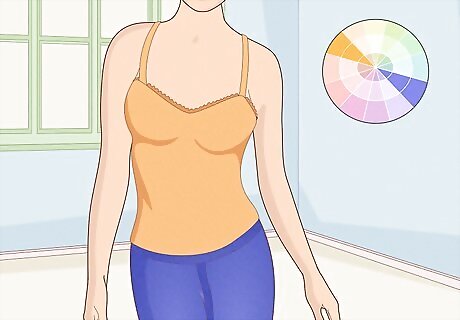
Match complementary colors. Look at the color wheel and pick any color, then move your finger to the color just opposite. Colors opposite on the wheel are complementary colors. When you place them next to each other, they help each other stand out and the combination looks appealing. Complementary colors of the same brightness and hue will always work well together. Popular complementary combinations include blue and orange, purple and yellow, and green and pink.
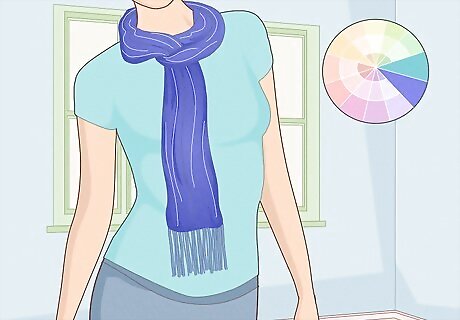
Match analogous colors. The concept is to stay within one color family in order to achieve harmony. These are the colors that are next to each other on the color wheel, like blue and indigo. Using varying shades of colors in the same family creates a nuanced look that has a beautiful, pleasing effect. For instance, a denim skirt with a light blue T-shirt and indigo scarf will likely go together well. Pick a favorite color and match it with a color to the immediate right or left. Red goes with pink, yellow with orange, and so on. Any gradations in the same family will match as long as they are the same hue, brightness, and so forth.
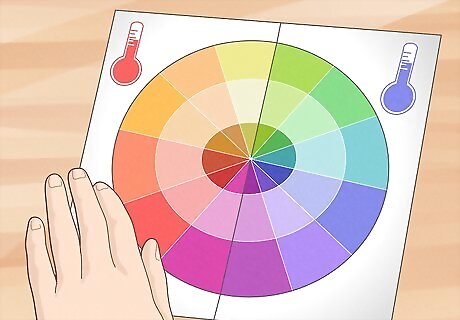
Learn about warm and cool colors. Warm colors like yellow, orange, and red are on one side of the color wheel, and cool colors like blue, green, purple are on the other side. Any color can have an element of warmth or coolness depending on what is mixed in. For example, if you mix basic purple with red, you end up with a warm, vibrant reddish purple. If you mix purple with blue, you end up with a cool, calming violet purple. When it comes to matching colors, temperature matters. When creating a color palette to use in your wardrobe or to decorate a room and you want a coherent effect, pair warm colors with other warm colors, and cool colors with other cool colors. For example, you might choose a rust-colored dress, a creamy mustard yellow scarf and a cognac purse. Mixing warm and cool colors in the same palette results in an effect that can be either fun and funky or a little jarring, depending on how you look at it.
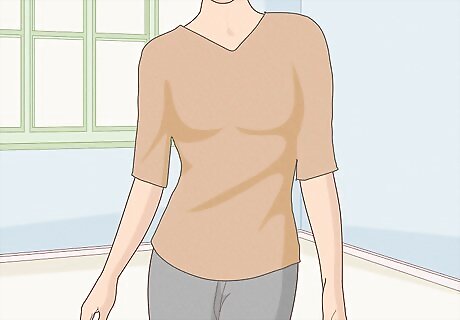
Consider "earth tones" or "neutral colors". Earth tones are not found on the color wheel, they are colors that do not exactly have an easy definition--these are colors that are more fashion-based than scientifically based. They tend to be muted colors which include: brown, cream, white, grey, and slate (grayish blue) fall into this category. These are natural, muted colors that match most other colors. They are reminiscent of natural elements like sand, soil and rock. However, they also encompass colors like off-white. Black, white, and tan or khaki are often considered neutrals in fashion. They will usually always go together with any color. An example is a black pair of pants with a bright pink blouse. In fashion, blue denim often is treated as a neutral. A pair of blue jeans will go with any colored shirt, for instance. When you are deciding what neutrals match your color palette, you need to take color temperature into account. For example, if your color palette is cool, your neutral could be a bright white or a blue black; warmer neutrals would clash. For a warmer palette, you might choose a brownish grey or cream. White and black are neutrals, but be aware that they are rarely absolutes. An off-white wall may have an undertone of yellow, for instance. Or a black shirt may have an undertone of blue. Neutrals are not boring! People sometimes mistakenly think neutral means boring, bland colors. The strength of neutral colors is that they work well in group and work well with primary or secondary colors. For example: A white t-shirt with blue jeans. Khaki pants and a black sweater.
Matching Colors in Your Wardrobe
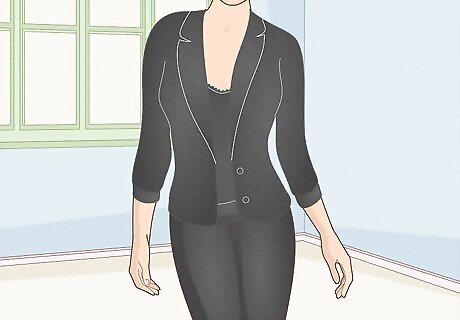
Try a monochrome look. Wearing the same color from head to toe is a striking look. The classic monochrome look is an all-black or all-white outfit, a sophisticated choice that lends an air of dressiness to your outfit. If you want to really turn heads, try a monochrome look in a brighter color, like red or green. This needs to be done with some care. A black dress, heels and purse may be gorgeous, but also could accidentally come off as a person in mourning, a Gothic look, or a hairdresser. The whole outfit needs to have consideration, not just color! The key to making a monochrome look work is finding items in the exact same color. Wearing a bright white top with cream pants is going to clash, but if you find two pieces in the same color, you're golden. To make a monochrome outfit look less extreme, break it up with some neutrals, like beige heels or a brown belt.
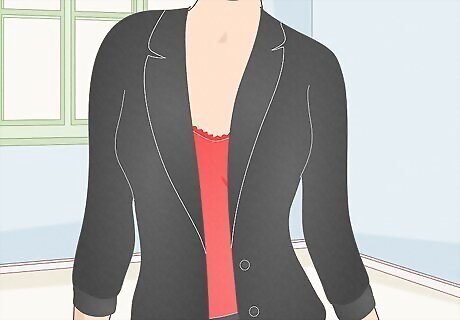
Wear an accent color. If you’re headed to a formal meeting that requires wearing a navy or black suit, you can still add some personality to your look with an accent color. Just make sure the accent color you choose is similar in temperature to your neutral basics. For example, If you're wearing a black suit, try a red or turquoise camisole or blouse. If you're wearing a navy suit, try a yellow or pink camisole or blouse. A common mistake people make is being afraid to take risks with color. Don't be afraid of bright colors.
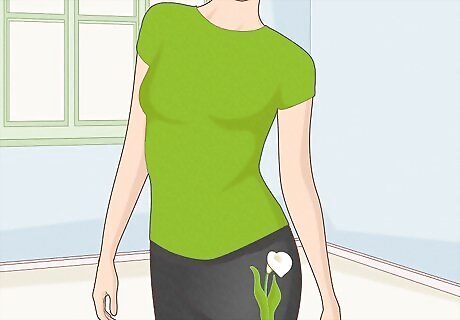
Learn to match prints. Once you gain the confidence to match colors effectively, you can start creating really stylish outfits by pairing unlikely items in your closet. You aren't limited to matching solids with solids. Branch out and start matching your stripes, polka dots, florals and animal prints with each other to completely reinvent your wardrobe. If you are wearing a print, generally try to match it to a solid. If you have a black skirt with a small floral print, pair it with a green top that matches the color of the leaves. While you can mix prints, it is a tricky thing to do. Wearing colors that pop also can help you out with your wardrobe style. Try Purple, Orange, and yellow. A purple shirt, An orange skirt, and yellow tights would look very nice. Maybe try it with a zebra print. Match two prints with the same color. A bit more difficult, but it produces striking results. The key is to find one like color across two prints. For example, if you have an orange-striped blouse, you can match it with a leopard-print skirt that has the same color. Match prints in the same color family. You can match prints that do not have the exact same color by playing within the same color family. A pair of ikat shorts with beige and cream tones can go with a chocolate brown polka-dotted blouse.
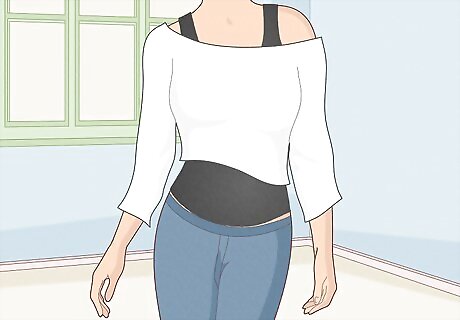
Know your neutrals. They are the versatile items in your closet that go with almost everything. Neutrals are easy to incorporate, but you should still put a little effort into making sure they match the other items you are wearing. Here are a few popular neutrals: Denim. Blue jeans go with any color top, and that goes equally to denim in skirts, jackets, dresses, or jeans. Just remember to take the wash into account. A saturated dark wash may match different colors than a light blue faded denim. Camel or brown. Perfect for a muted, earth-toned palettes. Navy. Looks beautiful with jewel-toned hues. Navy always pairs wonderfully with white and red. Navy tends to be less severe-looking than black, and tends to flatter skin more. Navy can also add a nautical flair when paired with red, khaki, and stripes. White and cream. Brightens any outfit, as long as you keep the temperature in mind. Gray. Gray pairs well with every color, and tends to express sophistication. Black. Black naturally goes with everything. It is also slimming. Be aware too much black can come across as severe, a person in mourning, or certain professions. White. White also goes with everything. Be aware that white will naturally draw the eye. Wearing too much white can come across as bridal.
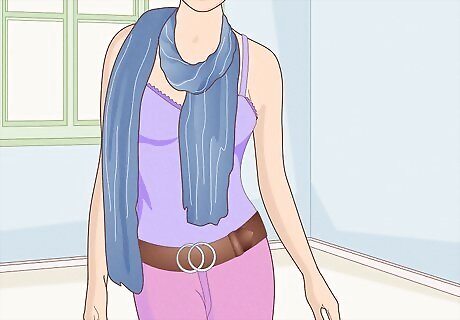
Use accessories to play with color. If you're just starting out in your quest to match more colors in your wardrobe, try playing around with accessories. Experiment to find out what looks good and what doesn't by wearing more belts, flats, jewelry, and scarves. Wearing accessories is also a fun way to learn more about mixing prints without splurging on expensive clothes that might not end up matching.
Choosing Colors to Decorate Your House
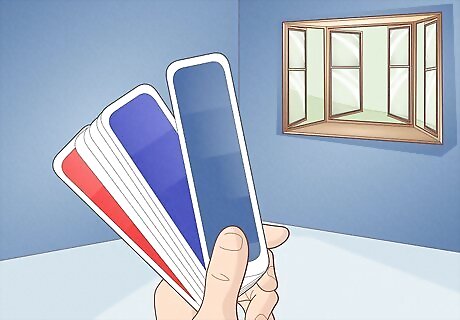
Go with Pre-Made Palettes or Color Collections. If you are unsure, it is often a good idea to start with something that professionals recommend. Most home improvement stores and paint vendors offer a selection of palettes that work together. Often these include a trim color that takes the headache of deciding which shade of off-white will work, too. You do not have to select all the colors off the palette or collection. If you do not like the green, but everything else works for you, simply do not use the green. You also do not have to use all twelve colors; just use what works for you and your space. You do not have to buy any paint to use the color in your house. For instance, you may like a little orange in your house, but painting a whole room orange may be too extreme for you. Instead, bring in that orange color with throw pillows, or a bedspread, paintings, curtains, and so forth.
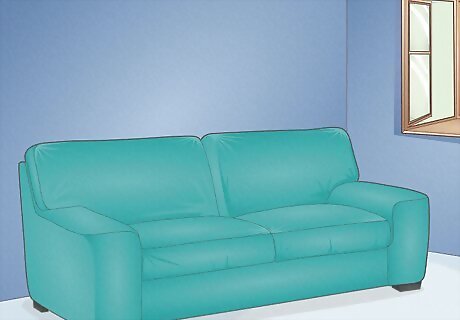
Pick slightly different colors for your paint and fabrics. Do not match a wall and couch with the exact same color. While these items will technically "match," the furniture and curtains should not essentially vanish into the walls. Instead, the color of both the wall and the couch will look understated. Here are a few ideas you can try instead: Go with colors in the same family. If you have a blue wall, try a blue-green couch. If your wall is yellow, choose a red and orange color scheme for the furniture. The colors will harmonize instead of canceling each other out. Or choose a contrasting color for a bigger splash. Buy an overstuffed violet armchair to put in your sunny yellow room, or try a bright coral sofa to offset your light turquoise walls.

Consider having an accent wall. Many people hesitate to paint an entire room one bold color, as it is a bold and risky move. An accent wall gives you the chance to play with color without committing to an entire room or area with one color. Here's how to do it: Saturated colors can have a strong effect on your emotional state. A bright red room might make you feel nervous, and a dark grey one might give you the blues. However, strong colors can affect a person positively. An orange room might make a person feel joyful and creative, and a dark grey one feel focused and sophisticated. Different people react differently to the same color in the same space. Pick a smaller wall in the room, like the area around your front door or above the kitchen counter. Paint it a bright color that matches the room's neutral. Or use a contrasting color for the trim. Painting borders in a contrasting color gives a room an eclectic, fun look. You could also create a stenciled trim in a different color. Keep in mind that color temperature can affect a room's mood. A soft purplish-pink wall color on a bedroom is romantic. But a bright fuchsia bedroom may come across as a bit too much. You can use nearly any intense color, but use just an accent. This can give the room the feel you want without being overwhelming. For example, if you love intense fuchsia in the bedroom, consider having such colors in the pillows, bedspread, and some paintings. If you are a homeowner, keep in mind that if you do choose very bright or saturated colors, you may well have to re-paint before selling. You may enjoy turquoise walls, but most home buyers may not. This can affect the re-sale value.

Experiment with colorful decorations. If you do not or cannot commit to painting your walls pink or buying a bright yellow couch, you can still add color to your decorating scheme through decorations. Throw pillows, vases, clocks, flowers, bookshelves, and other smaller items can add bursts of color that liven up a room. Just keep these thoughts in mind when you're decorating: Pick colors in the same family. Have a few decorations that match each other so that the room looks pulled together. For example, try a bookcase painted green, a pair of sea-green vases on the mantel and a collection of turquoise and green throw pillows and blankets. Avoid using too many colors in the same room, though. As a guideline, three is the maximum: main color, accent color, and trim color. Keep things simple, or else the room may take on a mismatched or chaotic appearance.



















Comments
0 comment